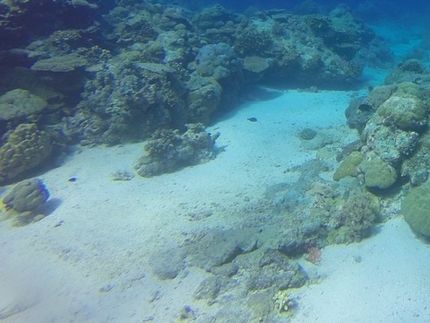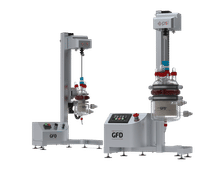K-State researchers patent a new multipurpose gel material with wide commercial applications
Advertisement
A team of Kansas State University researchers has patented a new, more cost effective way to make a gel that can be used in fuel cells, water filtration systems, or perhaps as a net to capture fine cometary dust.
K-State physics professor Christopher Sorensen was the lead researcher for carbon soot aerosol gels. The product, which is officially known as an aerosol gel, is a low density, high surface area gel formed in a gas.
"If you take a gaseous mixture of acetylene and oxygen and blow it up in a chamber, you get a cloud of smoke," Sorensen said. "But if you leave it alone for a couple of minutes the nanoparticles of carbon smoke link together to form a lacey network that spans the chamber. It looks like the darkest, blackest angel food cake you've ever seen."
When studying soot formation in flames about 12 years ago, Sorensen said he and a graduate student initially discovered that clouds of particles in a gas -- also known as aerosols -- can form a gel.
"When I first saw our pictures of gelled soot in a flame, I knew I had a big fish," Sorensen said of the discovery's magnitude. To that point, such gels had only been formed in liquids, much like the process used to make gelatin, he said.
Aerosol gels can be used as thermal or sound insulation, much like plastic foam. The material also has potential applications in electrochemical double layer supercapacitors, as fuel cell or general catalyst supports, or in water filtration systems. Sorensen has already been contacted by interested companies and is pursuing grants to further develop the material outside the laboratory setting.
"It is important to point out that this high-tech material, that could have a wide variety of applications, is the fruit of pure, curiosity-driven science," he said.
The new material is similar to an existing product called aerogels, which is made in the liquid phase, Sorensen said. The last step in the process to make aerogels is an intense, high-pressure drying step that removes moisture. That latter step -- which also can be quite costly -- isn't needed with Sorensen's aerosol gel product, which he hopes will be an advantage when it comes to the commercialization of the material.
"I take great pride in the fact that there is only one place in the world that gels aerosols and that's right here in good, ol' Manhattan, Kan.," Sorensen said.
K-State physics professor Amit Chakrabarti was instrumental in helping the research team understand the experimental conditions, and former K-State graduate students Rajan Dhaubhadel and Corey Gerving performed much of the requisite lab work. They are all listed on the patent, which was granted April 6 by the U.S. Patent Office.































































